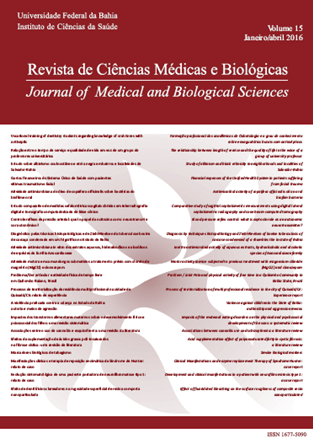Vocational training of dentistry students regarding knowledge of oral rinses with antiseptic
DOI:
https://doi.org/10.9771/cmbio.v15i1.16149Palavras-chave:
Antissépticos Bucais.Cloreto de Cetilpiridínio. Clorexidina. Triclosan.Óleos Essenciais.Resumo
Objective: the indiscriminate use of mouthwash with antiseptic carries health risks because the active pharmacological ingredients and other components of these formulations are not innocuous. From this perspective, it is essential to add this knowledge to the vocational training curriculum for dental students. The objective of this study was to assess the level of knowledge acquired by dental students graduating in 2014 about mouthwash with antiseptic and to evaluate the university education in three public and three private institutions. Methodology: an investigative enforcement tool was used to collect information from graduating students in 2014 from six dentistry undergraduate institutions in the state of Bahia. Results: of the students in private institutions, 56% reported having studied the rinses during their program, while 67% of students in public institutions indicated that they had not. Respondents cited a range of course and disciplines that addressed the topic. Of the students surveyed, 53.1% from public institutions and 46.9% from private institutions reported that they use rinses on a daily basis and expressed a preference for Colgate (50.7%), Oral B (26.4%) and Listerine (16.4%). With regard to knowledge of the active ingredients, 81% students did not answer, despite having general knowledge of diluents. Conclusion: although mouthwash is often included in the course of study, the level of knowledge students achieved was not considered satisfactory, given the high percentage of blank answers regarding active ingredients and indications.
Downloads
Downloads
Publicado
Como Citar
Edição
Seção
Licença
A Revista de Ciências Médicas e Biológicas reserva-se todos os direitos autorais dos trabalhos publicados, inclusive de tradução, permitindo, entretanto, a sua posterior reprodução como transcrição, com a devida citação de fonte. O periódico tem acesso livre e gratuito.






